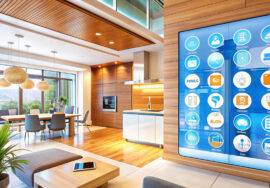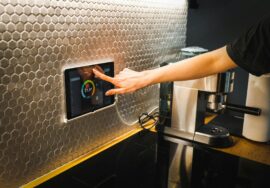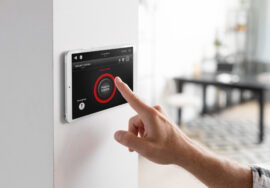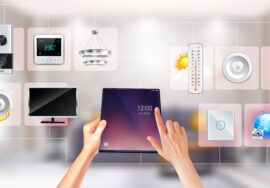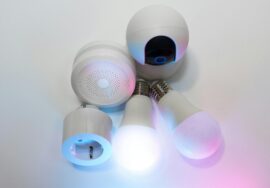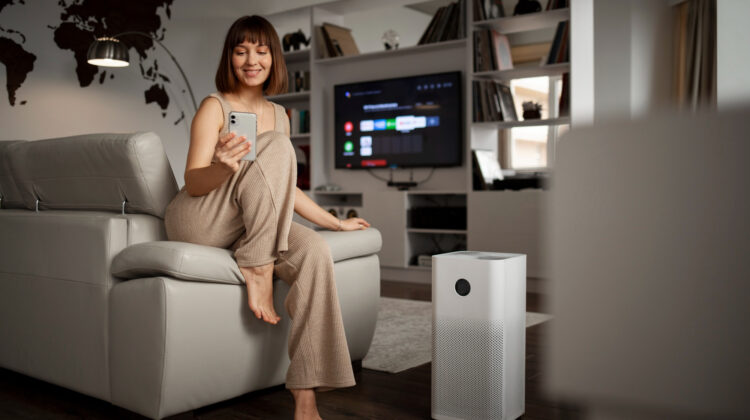
From Ambient Sensors to Smart Rooms: Building a Proactive Smart Home That Thinks for You
Introduction: The Evolution of Smart Living
Smart Home technology has progressed far beyond voice-controlled lights or app-based thermostats. The future is proactive—homes that anticipate your needs before you even realize them. With the rise of ambient sensors, AI-driven devices, and integrated ecosystems, the concept of smart rooms is shifting from reactive automation to intuitive living spaces that think for you.
This transformation is not just about convenience but about efficiency, safety, and sustainability. By combining sensors, machine learning, and cross-device communication, a Smart Home can create an environment that adapts to your lifestyle and enhances overall well-being.
What Are Ambient Sensors in Smart Homes?
Ambient sensors are devices that monitor environmental conditions—such as temperature, humidity, air quality, light, and motion—and relay data to a central hub or AI platform. Unlike traditional sensors that only trigger on/off actions, ambient sensors collect continuous data streams, allowing AI systems to learn patterns and make predictive adjustments.
For example, a motion sensor doesn’t just detect presence anymore. It can identify movement patterns, distinguish between family members and pets, and optimize lighting or heating schedules based on actual usage.
The Rise of Smart Rooms: Moving Beyond Device Control
The idea of smart rooms is the next phase in Smart Home innovation. Rather than controlling individual devices, entire rooms become intelligent environments. A smart bedroom adjusts lighting, temperature, and sound to support sleep, while a smart kitchen optimizes energy use, tracks food supplies, and integrates with meal planning apps.
The room itself becomes the interface—powered by ambient sensors, context-aware AI, and seamless connectivity between devices.
Key Technologies Driving Proactive Smart Homes
1. AI-Powered Central Hubs
Voice assistants like Amazon Alexa, Google Home, and Apple HomeKit have evolved into central brains of the home. With AI updates, these hubs don’t just respond to commands—they anticipate them. For instance, if you always dim the lights before watching TV, the system will start automating the routine without you asking.
2. Environmental Monitoring
Smart thermostats, air purifiers, and humidity controllers create healthier living spaces. With ambient sensors, they can react to changes instantly—adjusting airflow if CO₂ levels rise or turning on dehumidifiers during rainy seasons.
3. Adaptive Lighting and Energy Efficiency
Lighting is no longer about simple schedules. With sensors detecting natural sunlight, smart lighting systems adjust brightness and color temperature to align with circadian rhythms, reducing energy waste while supporting health and productivity.
4. Security Through Proactivity
Instead of simply sounding alarms, proactive security systems detect unusual patterns—like repeated door activity during odd hours—and notify homeowners. Cameras combined with AI can distinguish between known family members, delivery staff, and intruders.
5. Multi-Device Integration with Matter
The Matter protocol is eliminating compatibility issues by enabling seamless communication between devices from different brands. This allows truly unified smart rooms that don’t rely on isolated ecosystems.
Benefits of a Proactive Smart Home
- Energy Savings: AI ensures devices only operate when needed, significantly reducing bills.
- Health and Comfort: Personalized environmental adjustments improve sleep, mood, and overall well-being.
- Enhanced Security: Predictive monitoring reduces false alarms and provides reliable protection.
- Convenience: Routine tasks like adjusting thermostats, locking doors, or switching lights happen automatically.
- Sustainability: Efficient energy use contributes to reduced environmental impact.
Real-World Applications of Smart Rooms
- Smart Living Room: Detects family presence and automatically dims lights, adjusts sound levels, and reduces energy use when unoccupied.
- Smart Bedroom: Tracks sleep cycles and modifies temperature and lighting to enhance rest.
- Smart Kitchen: Suggests recipes based on fridge inventory, adjusts ventilation during cooking, and powers down appliances when not in use.
- Smart Office: Monitors posture, air quality, and lighting to optimize productivity for remote workers.
Challenges and Considerations
While the vision of proactive smart rooms is compelling, certain challenges remain:
- Cost of Implementation: Full-room smart setups can be expensive.
- Privacy Concerns: Ambient sensors collect sensitive data, raising questions about storage and usage.
- Complexity: Beginners may find system integration and setup overwhelming.
- Dependence on Internet Connectivity: Many smart systems rely heavily on stable Wi-Fi.
Understanding these limitations allows homeowners to make informed decisions when adopting Smart Home technology.
Preparing Your Home for the Next Phase
If you’re planning to upgrade your home into a proactive smart environment, consider these steps:
- Start with Sensors: Introduce smart sensors for motion, temperature, and air quality.
- Invest in AI Hubs: Choose a reliable AI-powered central hub with Matter compatibility.
- Expand by Room: Upgrade one room at a time (bedroom, living room, or office) for smoother integration.
- Prioritize Privacy: Opt for devices with transparent privacy policies and secure encryption.
- Automate Gradually: Build routines step by step to avoid complexity overload.
Future Outlook: Homes That Truly Think for You
The future of Smart Homes lies in contextual awareness and predictive action. As AI becomes more sophisticated, smart rooms will evolve from reactive tools to proactive partners in daily life. Expect to see biometric integration, emotional AI that responds to stress levels, and furniture embedded with sensors to further blend technology with lifestyle.
By 2030, smart rooms may go beyond personal convenience and play a central role in healthcare monitoring, energy sustainability, and mental well-being.
Conclusion: Living in Harmony with Technology
The shift from ambient sensors to smart rooms is ushering in a new era of Smart Home living. Instead of responding to commands, your home will anticipate, adapt, and optimize itself for your comfort, safety, and efficiency. Though challenges like cost and privacy remain, the benefits are clear—homes are becoming living ecosystems that think alongside us.
For homeowners and tech enthusiasts alike, embracing proactive Smart Home innovations is not just about convenience—it’s about creating a smarter, healthier, and more sustainable lifestyle.
